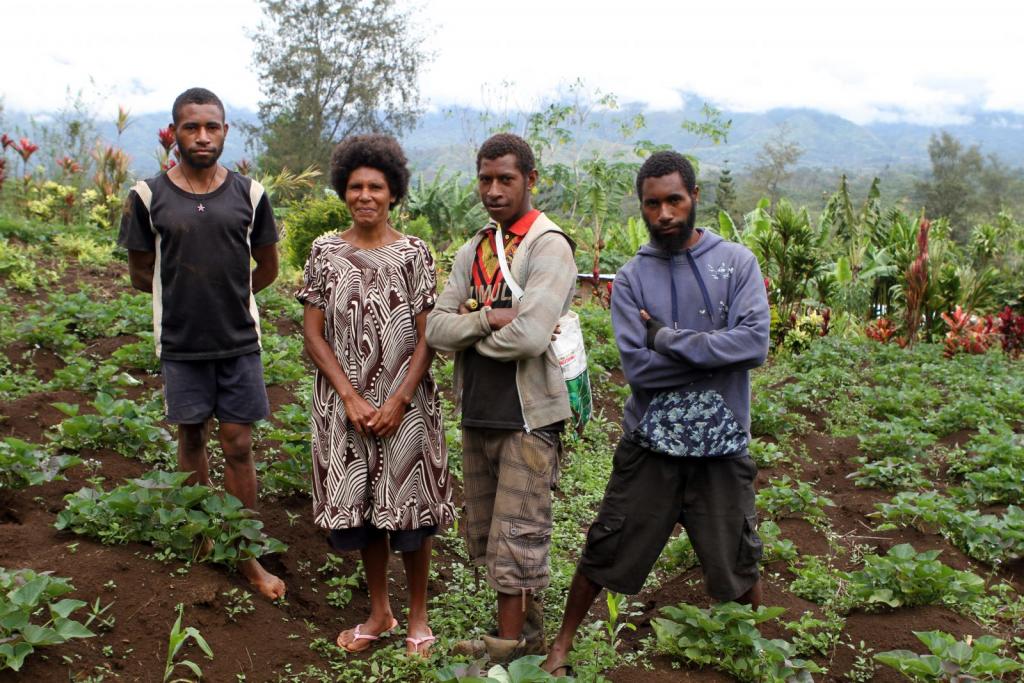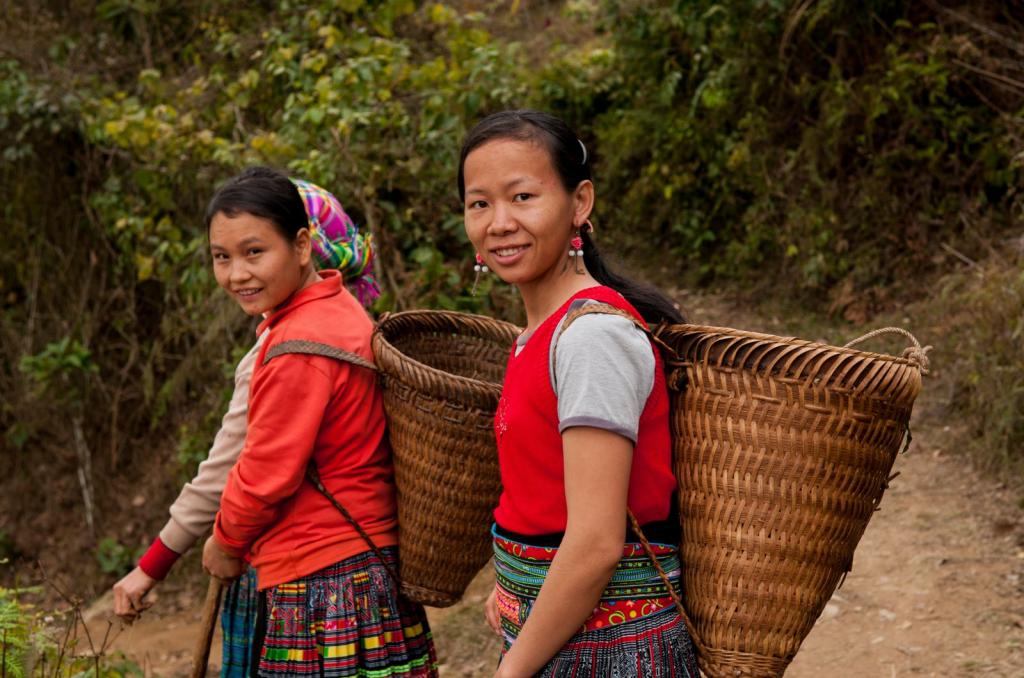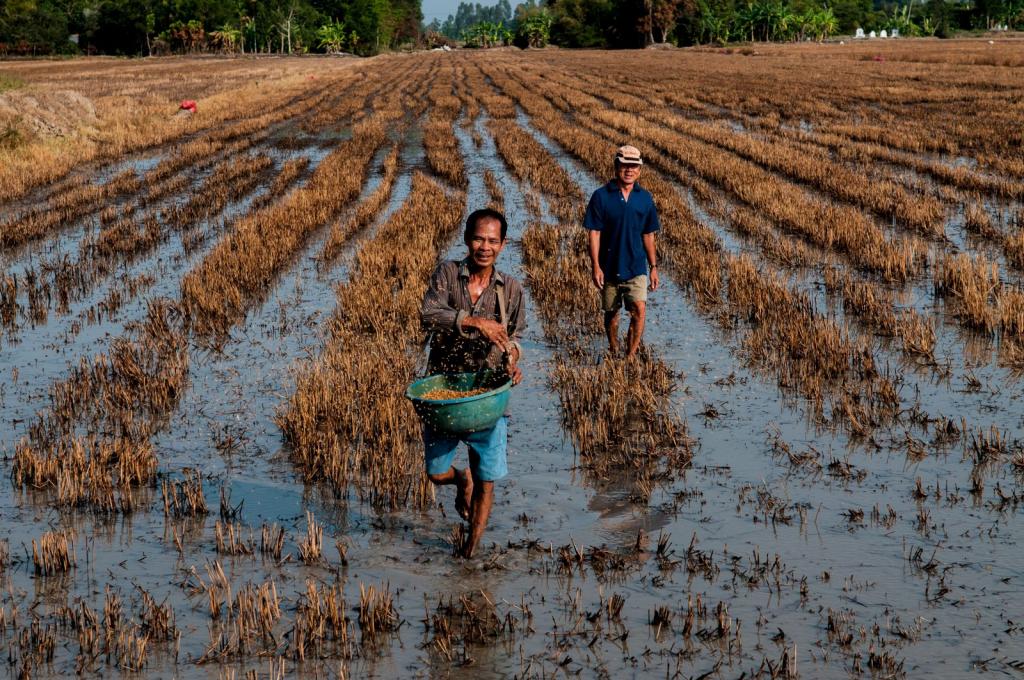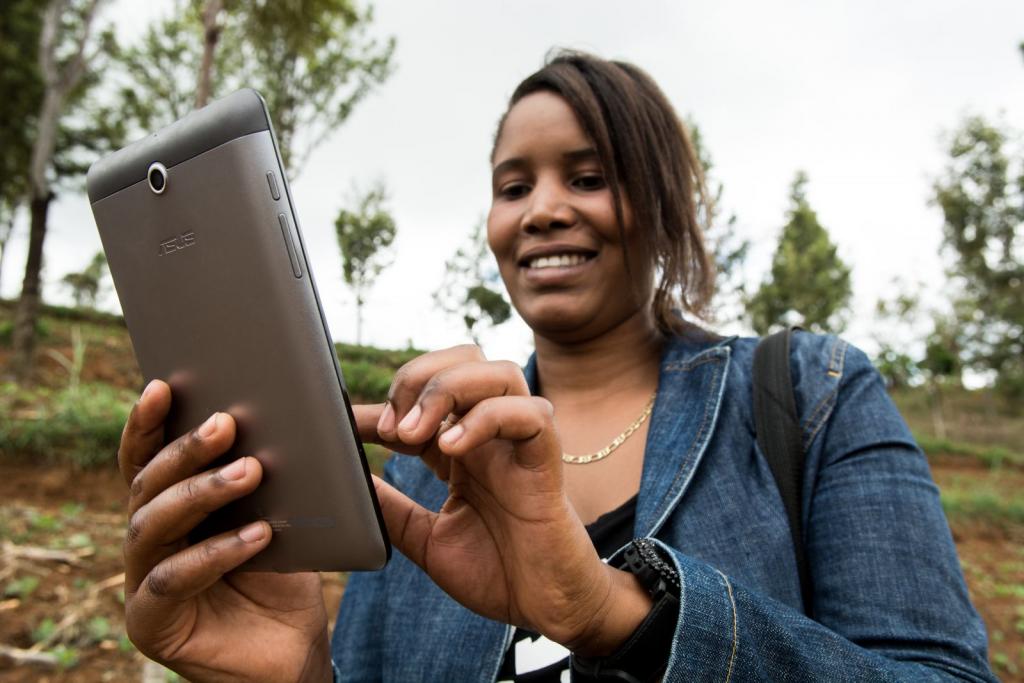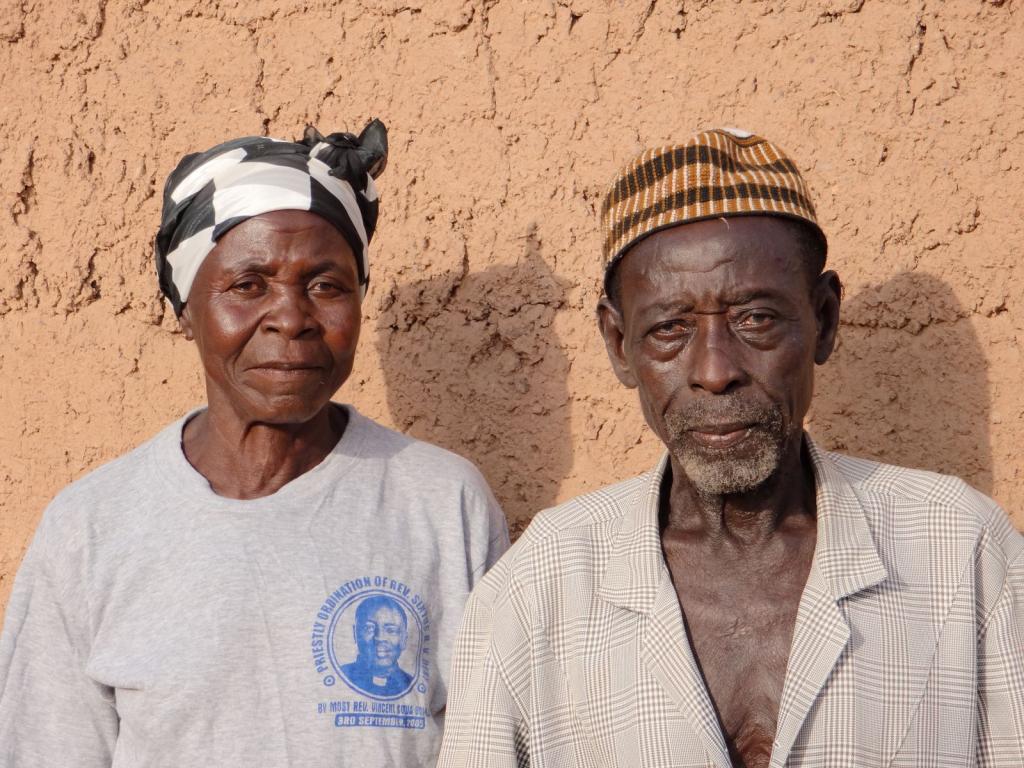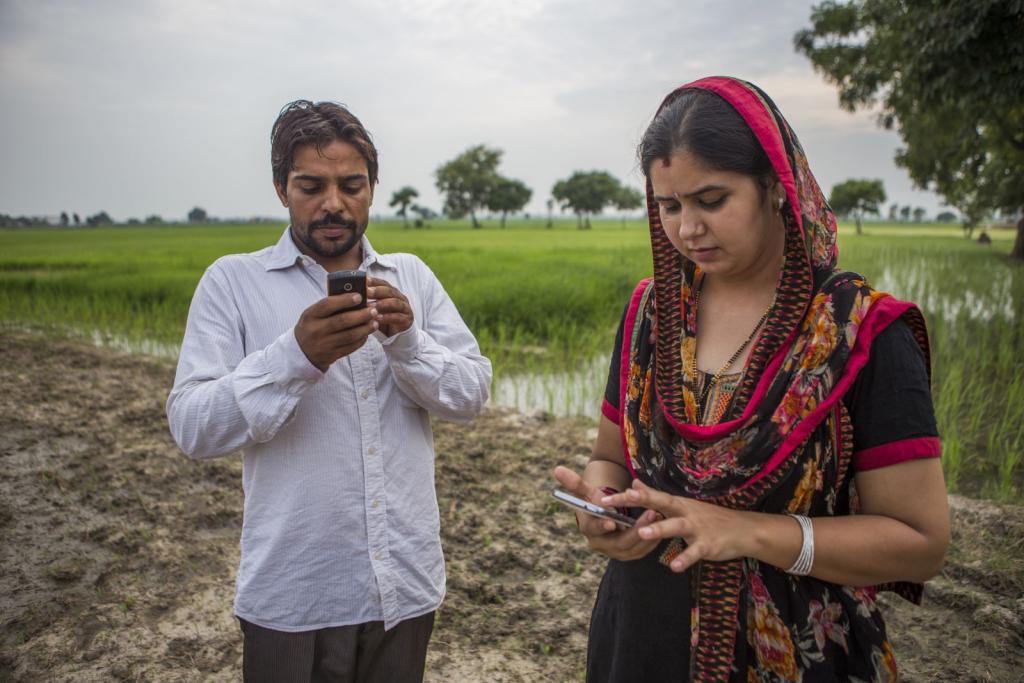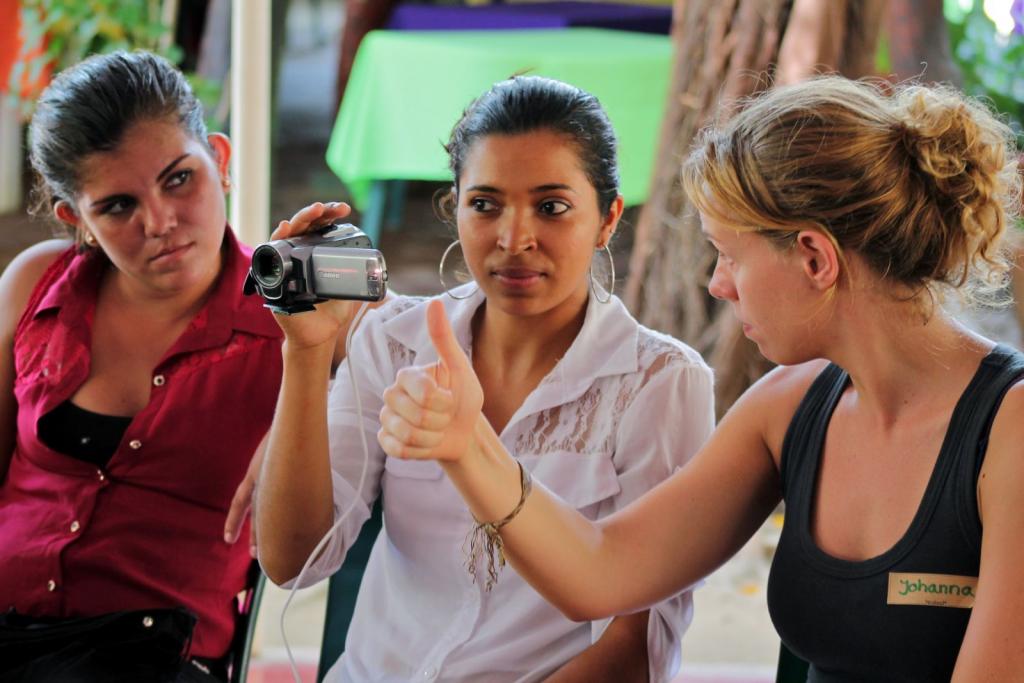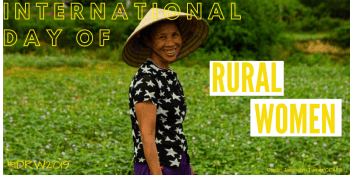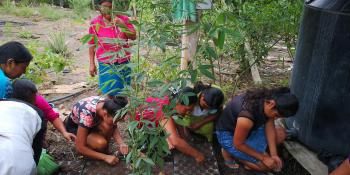Photo-story: closing the gender gap in farming under climate change
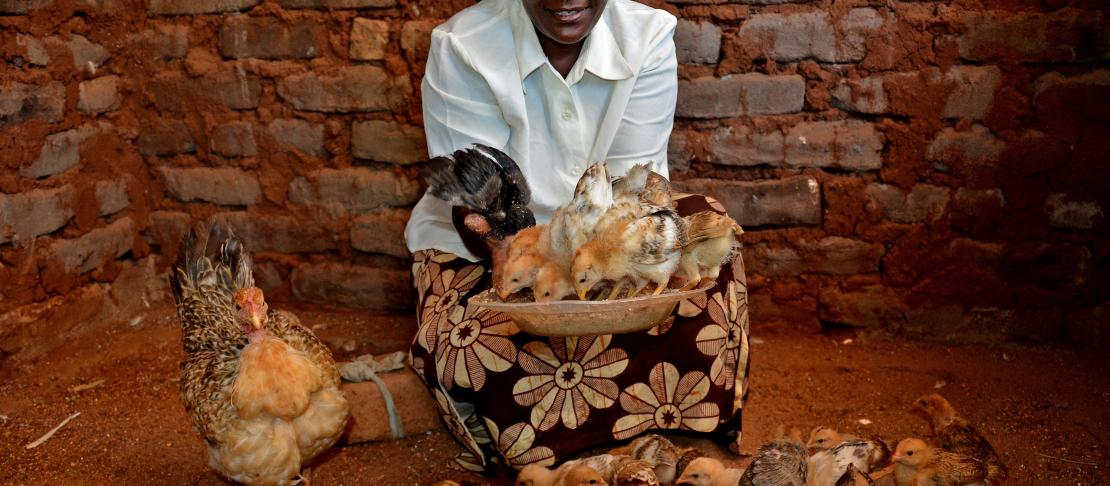
Worldwide, researchers and partners are taking steps to close the gender gap in farming under climate change.
If you want to know more about research on closing the gender gap in farming under climate change:
- read our special blog series on Closing the gender gap
- watch the presentations and the panel discussion from the Closing the gender gap event
- follow the #AgGenderGap event hashtag on twitter
A recent study finds that women in Africa are less likely than men to be aware of climate-smart practices. This is because men have greater access to information than women. Getting the information out to women farmers and socially marginalized groups is therefore key, as the same research shows that women who know about the practices are just as likely as men - if not more - to adopt them.
A substantial part of CCAFS work deals with addressing challenges women face in agriculture. A major activity aims at having positive impact on social inclusion for both men and women farmers by providing relevant gender analyses for the research program, support and knowledge on how to integrate gender as a perspective into the work.
A workshop in Lower Kamula village in Kenya brings men and women together to discuss the village’s values and resources, and what it needs to prosper under a changing climate. Participants helped to test the Gender and Inclusion Toolbox, which provides tools and methods to conduct socially inclusive and gender-sensitive research in the context of climate change and agriculture. Photo: C. Schubert (CCAFS)

With many working-age men leaving Nepal’s Terai plain to work abroad, women are increasingly responsible for food production in the region. This means they are also the ones most likely to be affected by the effects of climate change in agriculture. Photo: Neil Palmer (IWMI)

Sustainable production of improved, eco-friendly varieties of pigeonpea, a drought-resistant pulse, has brought a new source of food, fuel and income to poor women in the Indian village of Padasoli, near Jaipur, Rajasthan. Photo: A. Paul-Bossuet (ICRISAT)
In Papua New Guinea, Bioversity International is working with farmers on taro, a crop grown mainly by men, and sweet potato, grown mainly by women. Farmers mostly get new crops and varieties from family or through marriage between tribes. How can these gender and kinship factors help improve seed systems for all farmers? Photo: P. Quek (Bioversity International)
Women are strong and creative drivers of change and their involvement is key to ensure success in climate change mitigation and adaptation. Valuing women’s agricultural knowledge can lead to new technologies, organizational forms, and political strategies that encourage low emissions agricultural development and transform gender dynamics. Photo: G. Smith (CIAT)
The Mekong Delta is set to face more extreme weather conditions in Vietnam. Climate change impacts men and women differently - understanding these differences is essential to developing successful adaptation strategies. Photo: G. Smith (CIAT)
Collecting and analyzing data from both men and women is important to ensure both genders are represented in adaptation and mitigation measures to combat climate change. Photo: G. Smith (CIAT)
Empowering women in research can motivate new insights and perspectives, to address pressing challenges which both female and male farmers face, such as climate change. Photo: G. Smith (CIAT)
Gender differences can create barriers to climate change adaptation. In many places, women are less likely than men to own land or livestock, adopt new technologies, use credit or other financial services, or receive education or extension advice. In some cases, women do not even control the use of their own time (source: FAO). Photo: C. Peterson (CIAT)
A woman farmer tests a hand jabber for planting maize seeds into mulch in Masvingo, Zimbabwe. She is part of an initiative to test the suitability of drought and heat-tolerant varieties in "climate hotspots." When given the opportunity, women are just as likely as men to adopt and sustain climate change strategies and good agricultural practices. Photo: J. Cairns (CIMMYT)
Vinod Kumar and his wife Ruby Mehla receive regular updates on weather and climate smart practices through voice messages on their registered mobile phone in the climate-smart village of Anjanthalli, in Haryana, India. Climate information, which is essential for adaptation, needs to reach both men and women. Photo: P. Vishwanathan (CIMMYT)
Participatory videos can empower community members to explain, in their own words, how the effects of climate change have manifested in their lives and in which ways they hope to improve in the future. These young women learned how to write, direct and film their own stories as part of a participatory video project in Nicaragua. Photo: G. Betancourt (CIAT)
Closing the gender gap
At our next high-level event on 19 March we aim to share cutting-edge knowledge and evidence on closing the gender gap in farming under climate change, and to convene thinkers and doers in a forum to inspire renewed action.


